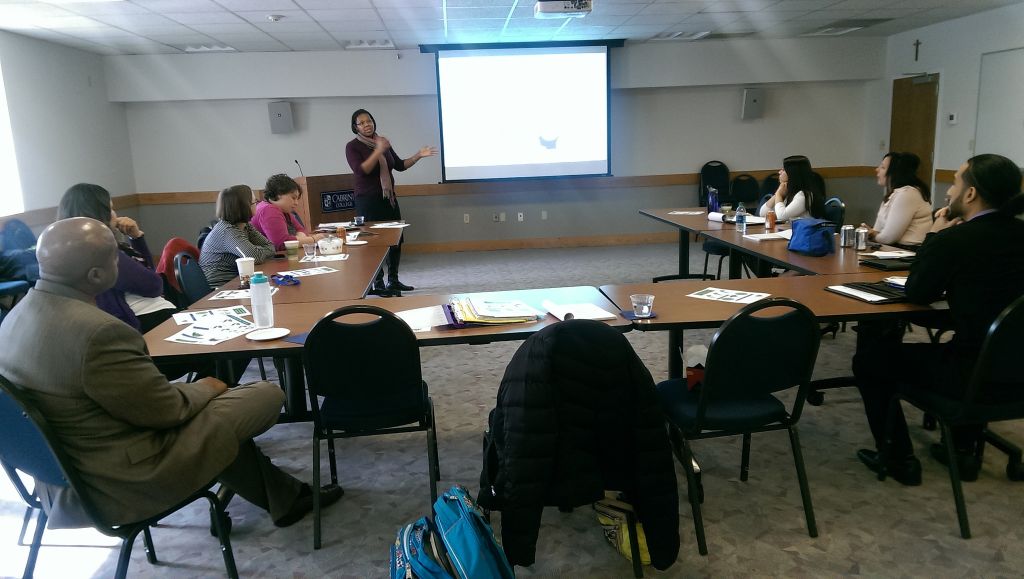
The graduation rate of African American students is less than that of Caucasian students, said a speaker at the brown bag luncheon.
The brown bag luncheon is a place where students and faculty can come and learn about the enrollment rates at Cabrini in comparison to student rates on a national level. This information is compared with other schools across the country in higher education and the most important thing for students is to see that our numbers are not very different from the numbers at other universities.
Sarah Carter, the assistant director of programming in diversity initiatives, said, “To me, personally, it’s an opportunity to dialogue, experience and celebrate the contributions of the African American and black community and highlight that experience and celebrate that experience regionally, nationally and globally.”
Carter said, “The average rate is 55 percent, which is significantly lower than the graduation rates of white students and our goal is to support them in their journey graduating from college.”
Data shows that there is a difference in students’ graduation rates for those who graduate from public schools and private schools. According to the data, the enrollment for state schools is 12 percent and the enrollment for private and for-profit institutions is 11 percent. On average, graduation rates for African American students from 2006 to 2008 is 55 percent compared to the graduate rate of white students being 73 percent for those same years.
Stephanie Reed, the director of student diversity, said, “A lot of the research shows that when schools have high graduation rates for everybody, then they also have high graduation rates for students of color. If schools already have high expectations for students then the culture of the university is already one of excellence, so they expect students to come in and finish.”
Reed said, “I think that students of color have different needs, and those needs are not always addressed by the institution that the students might attend. Sometimes schools themselves might not be diverse based on demographics themselves, which make them not feel like they are part of the community. Also, what they are being taught does not match their life experiences so they don’t think they fit in.”
Nazifa Akanda, criminology and sociology major, said, “In college sometimes people are determined to fit in, but sometimes family problems and personal problems make it harder to go to school.”
Besides the brown bag discussion there are things other events run out of this office, and even though we have programs for everyone and these topics are focused on different diversity issues such as ability, sexual orientation, or diversity.
Reed said, “We have leadership opportunities in this office that are a little different form the seal office because it may be dealing with a race or sexuality issue. One of the programs is called the Advisory Council for Inclusivity and Diversity program (ACID), which is a peer-educated program, and students go to a leadership conference at Temple University and learn how to address all issues of diversity.”
Carter said, “They also have the PUMP program, which allows students of color gives them a sense of community and an opportunity to get acclimated to Cabrini College.”
Reed said, “We also advise four clubs that are student led, but they get a lot of advice about how to educate other people on race, religion and sexuality. The Office of Student Diversity Initiatives is a place for student of color to feel safe on campus, but not just students of color, all the students.”
Reed said, “We also share things online and we do a lot of social media. We have a blog we are trying to get more people to be active on our Word Press blog called www.divcabrini.wordpress.com. On the blog, students can read other students blog posts, and I have a page dedicated to students of color so they can be successful in higher education.”


